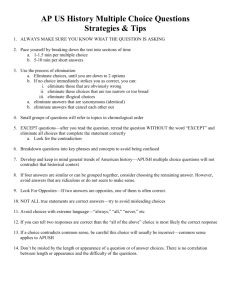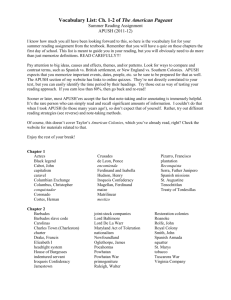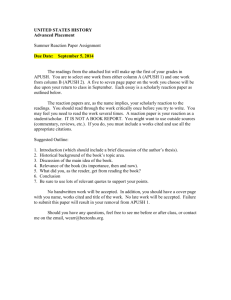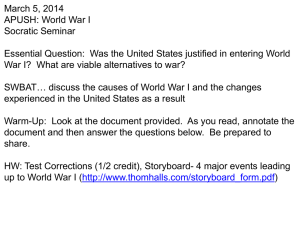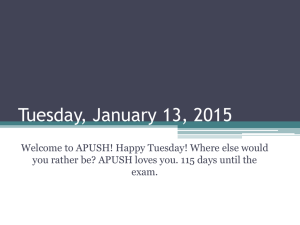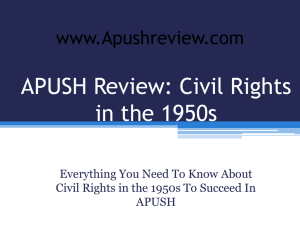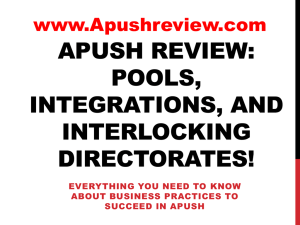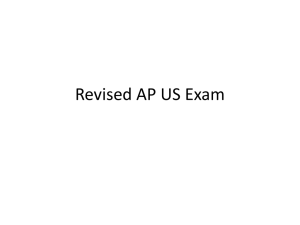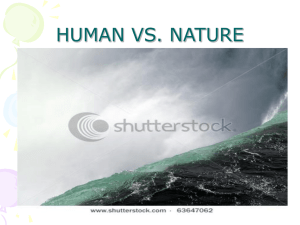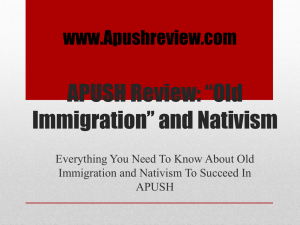Ch. 02 Study Guide (First Encounters First Conquests) (1492
advertisement
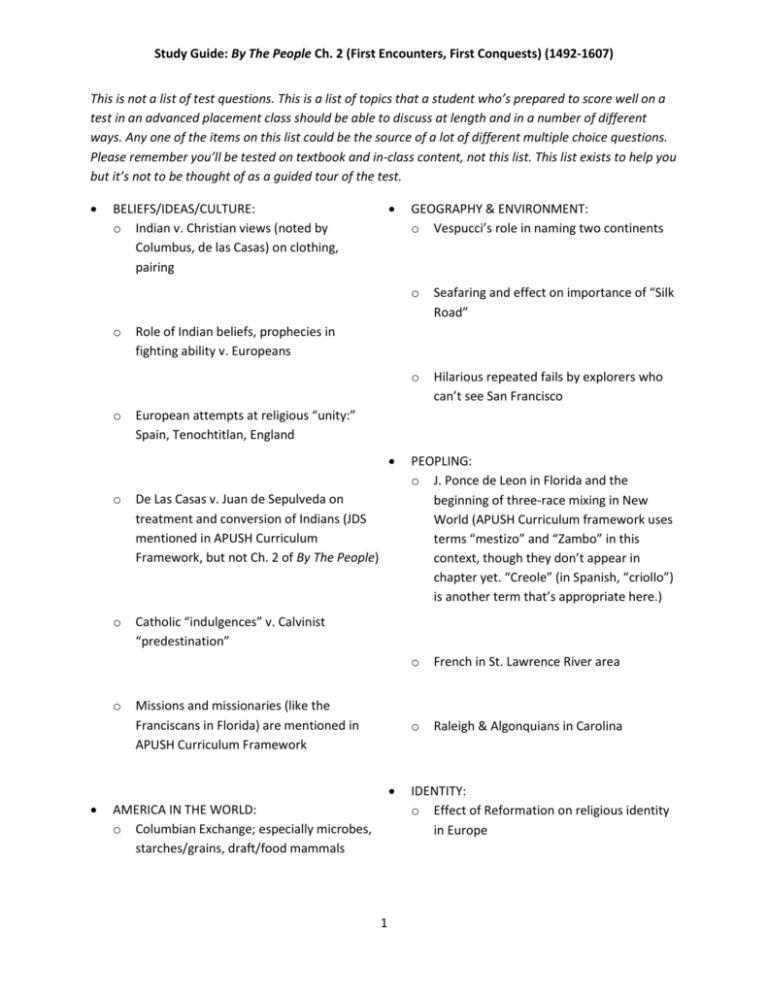
Study Guide: By The People Ch. 2 (First Encounters, First Conquests) (1492-1607) This is not a list of test questions. This is a list of topics that a student who’s prepared to score well on a test in an advanced placement class should be able to discuss at length and in a number of different ways. Any one of the items on this list could be the source of a lot of different multiple choice questions. Please remember you’ll be tested on textbook and in-class content, not this list. This list exists to help you but it’s not to be thought of as a guided tour of the test. BELIEFS/IDEAS/CULTURE: o Indian v. Christian views (noted by Columbus, de las Casas) on clothing, pairing o o Seafaring and effect on importance of “Silk Road” o Hilarious repeated fails by explorers who can’t see San Francisco European attempts at religious “unity:” Spain, Tenochtitlan, England o De Las Casas v. Juan de Sepulveda on treatment and conversion of Indians (JDS mentioned in APUSH Curriculum Framework, but not Ch. 2 of By The People) o Catholic “indulgences” v. Calvinist “predestination” Missions and missionaries (like the Franciscans in Florida) are mentioned in APUSH Curriculum Framework o Role of Indian beliefs, prophecies in fighting ability v. Europeans o GEOGRAPHY & ENVIRONMENT: o Vespucci’s role in naming two continents AMERICA IN THE WORLD: o Columbian Exchange; especially microbes, starches/grains, draft/food mammals 1 PEOPLING: o J. Ponce de Leon in Florida and the beginning of three-race mixing in New World (APUSH Curriculum framework uses terms “mestizo” and “Zambo” in this context, though they don’t appear in chapter yet. “Creole” (in Spanish, “criollo”) is another term that’s appropriate here.) o French in St. Lawrence River area o Raleigh & Algonquians in Carolina IDENTITY: o Effect of Reformation on religious identity in Europe Study Guide: By The People Ch. 2 (First Encounters, First Conquests) (1492-1607) o Effect of Henry VIII’s rebellion, Elizabethan reforms, & imperialism on religious identity in England o Florida “identity;’ distinct from both Old and New Spain o POLITICS & POWER: o Treaty of Tordesillas o Spanish v. Pueblo in New Mexico (emphasis shifts from gold to settlement; tactics get rougher over time); including eventual “settlement” under Juan de Oñate (mentioned in APUSH Curriculum Framework) o 1588 and power shift in Europe Religious identity and the founding and destruction of Fort Caroline o Cortes v. Aztecs, including role of alliances (technology plays key role in this story, too) o Development of the nation-state o Diplomatic attempts to solve Europe’s religious differences ECONOMICS (WORK, EXCHANGE, TECHNOLOGY): o Role of “guns, germs, & steel” in IndianEuropean interactions (note: steel is mostly iron) o Columbus’s Caribbean quest for gold o Circumnavigation efforts (Magellan and Drake) o Johannes Gutenberg o “Privateering” NOTES: o Sugar is mentioned in the APUSH Curriculum Framework. Though not mentioned often by name in this chapter, it should be thought of as what will be the main economic activity (and driver of slavery) in European-controlled Caribbean after conquerors realize that the area is not going to be much of a source of gold and silver. o Silver is mentioned in the APUSH Curriculum Framework. Thought not mentioned often by name in this chapter, it should be considered whenever there’s a reference to gold. o The sextant—a celestial navigation device for sailors—is mentioned in the APUSH Curriculum Framework and should be considered when the textbook refers to technological advancement that allowed for sailing over greater distances. o Story of Cabeza de Vaca and Esteban are amazing o De Soto might be the most ruthless guy we’ve seen so far 2
